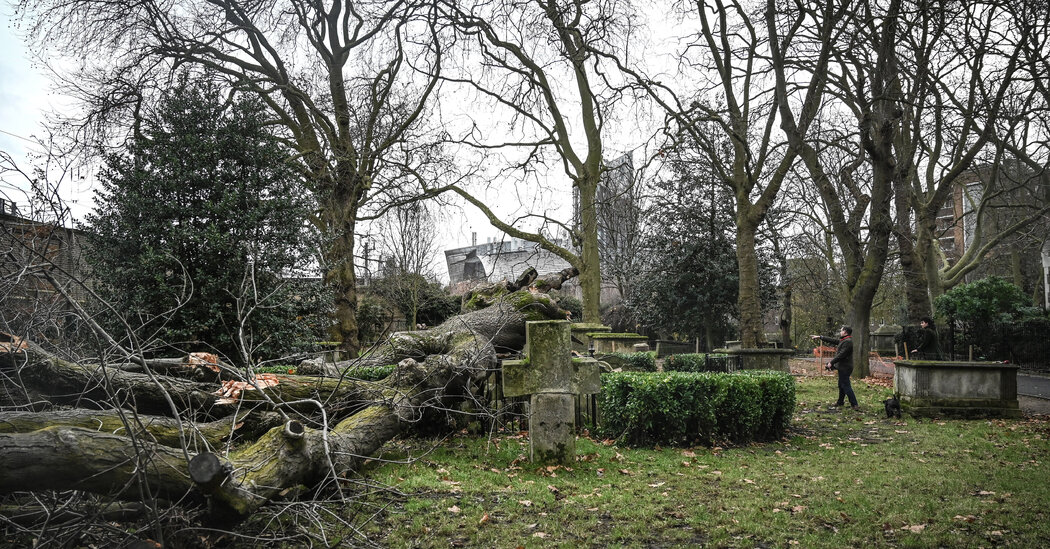On Tuesday afternoon, a few local residents gathered around the tree, either in tribute or because they happened to be walking by with their dogs. Lester Hillman, a church volunteer and a local guide, recited a Hardy poem.
We late-lamented, resting here,
Are mixed to human jam,
And each to each exclaims in fear,
‘I know not which I am!’
Mr. Hillman said the poem was inspired by Hardy’s work in the St. Pancras Old Church cemetery. Among the remains that were exhumed were those of William Franklin, the son of Benjamin Franklin, who helped draft the Declaration of Independence, Mr. Hillman said.
Joseph Khoury, a tourist from Canada on a two-week vacation to Britain, was familiar with the tree but did not know that it had fallen until he arrived at the cemetery with his son and saw it for himself. “It’s such a landmark,” he said. “The thing that’s going through my mind is will they plant another tree in its place to commemorate it.”
The site on which the Hardy Tree grew is one of the oldest places of Christian worship in London, and Roman tile can be found in the exposed medieval wall of the Anglo-Catholic church that was rebuilt there, according to Father Elston. Before the cemetery excavation, the churchyard was frequented by Charles Dickens, who lived nearby and referred to it in “A Tale of Two Cities.” Mary Shelley, who wrote “Frankenstein,” also spent time in the park, where her mother, the feminist Mary Wollstonecraft, was buried before her remains were relocated.
Father Elston said he hoped that people would still visit the place where the tree stood, since the gravestones that encircled it had hardly been damaged by the falling tree. “It was a way into the church,” he said. “I hope the site will still be of significance.”
Richard Roques, who leads tours of the King’s Cross area, which includes the Hardy Tree, said he loved it for its connection to the past.
“It tells a story, a physical story of time changing and the march of progress and the railways going ahead, and the tree then simply continuing in its growth while the gravestones are there,” Mr. Roques said.
Click Here to Read the Full Original Article at NYT > Travel…
